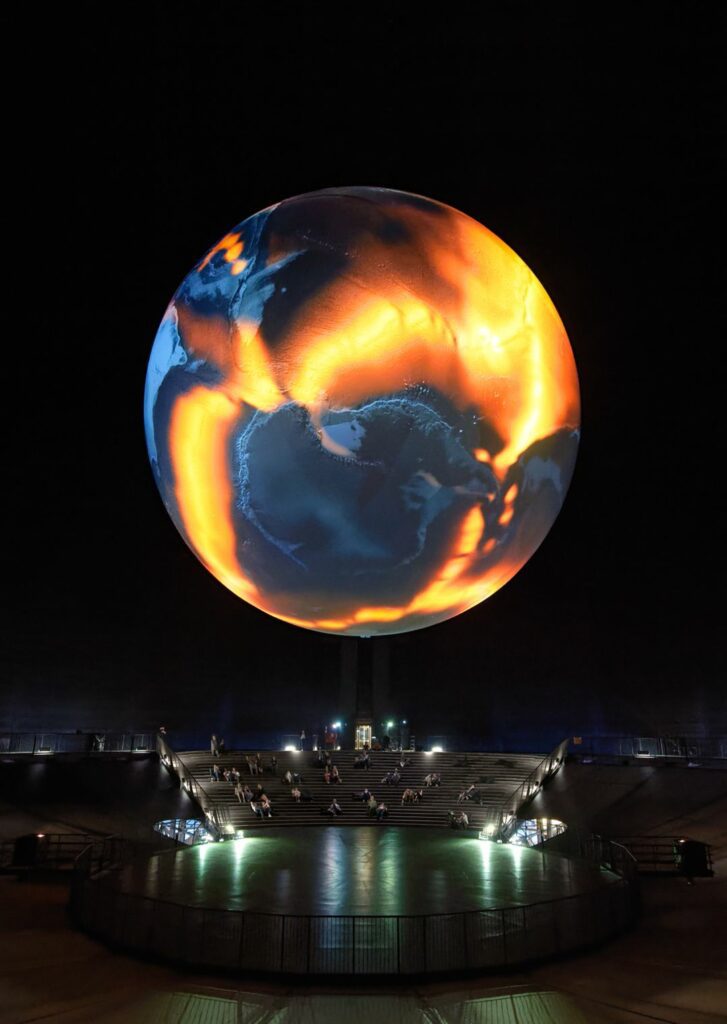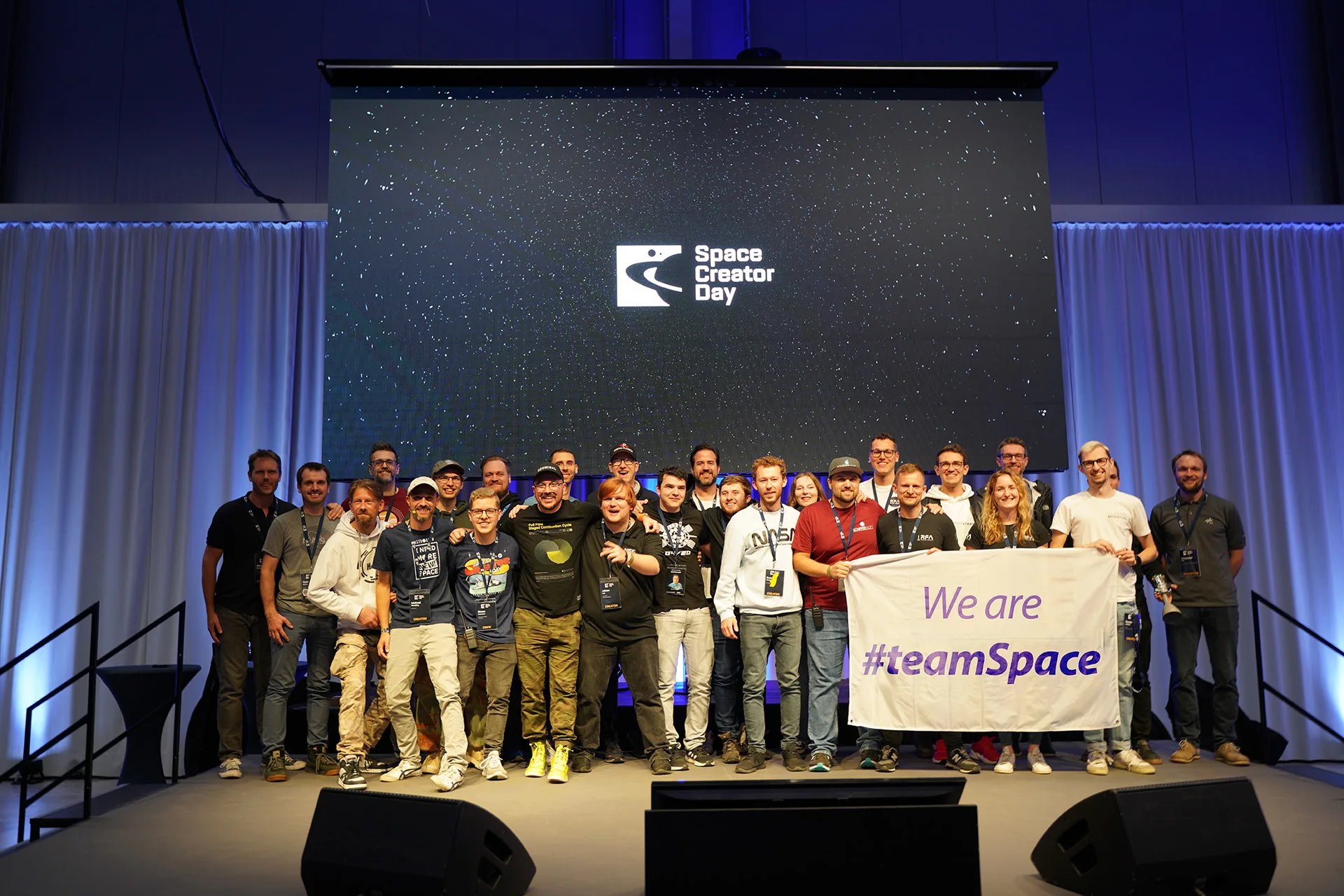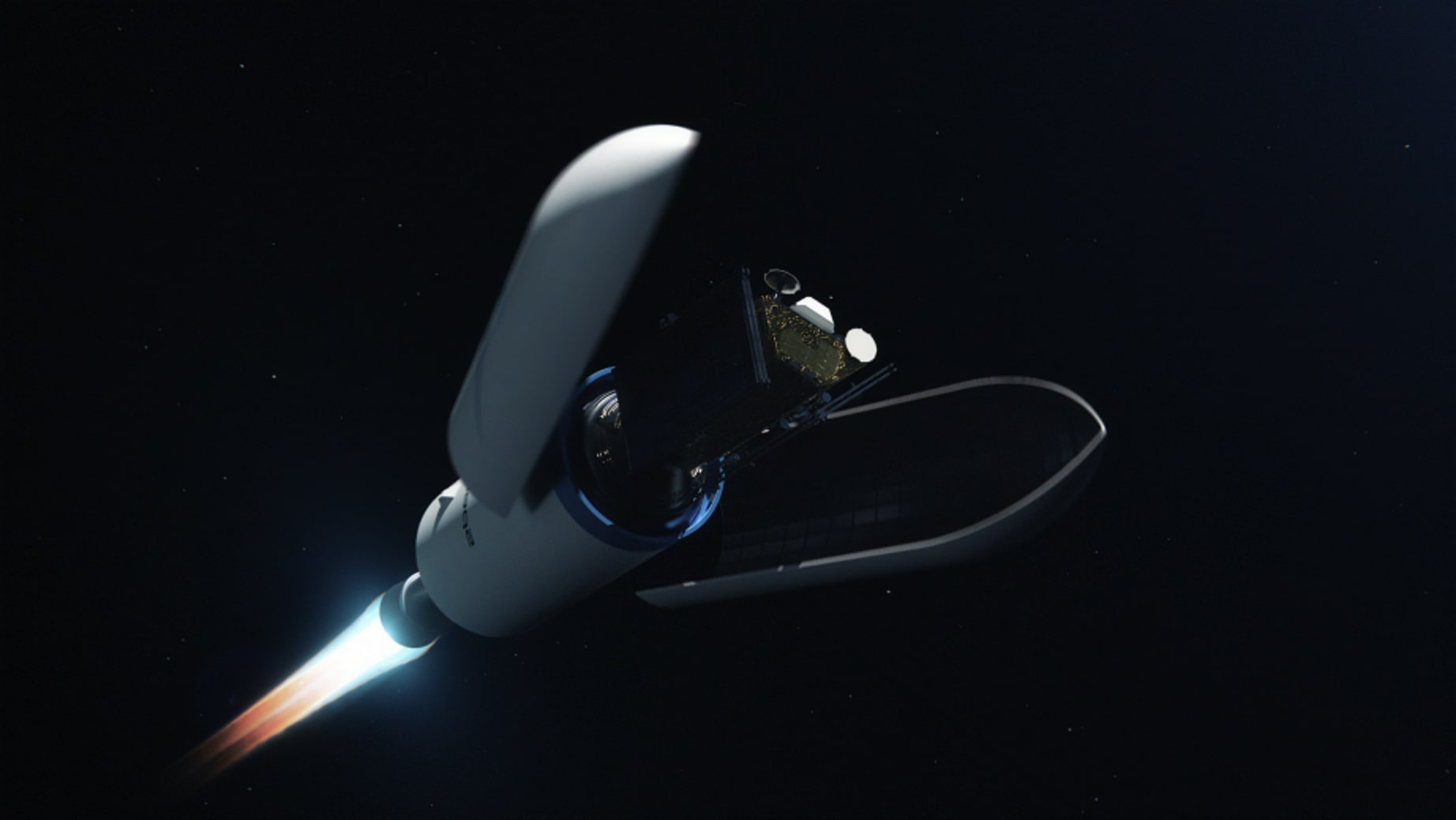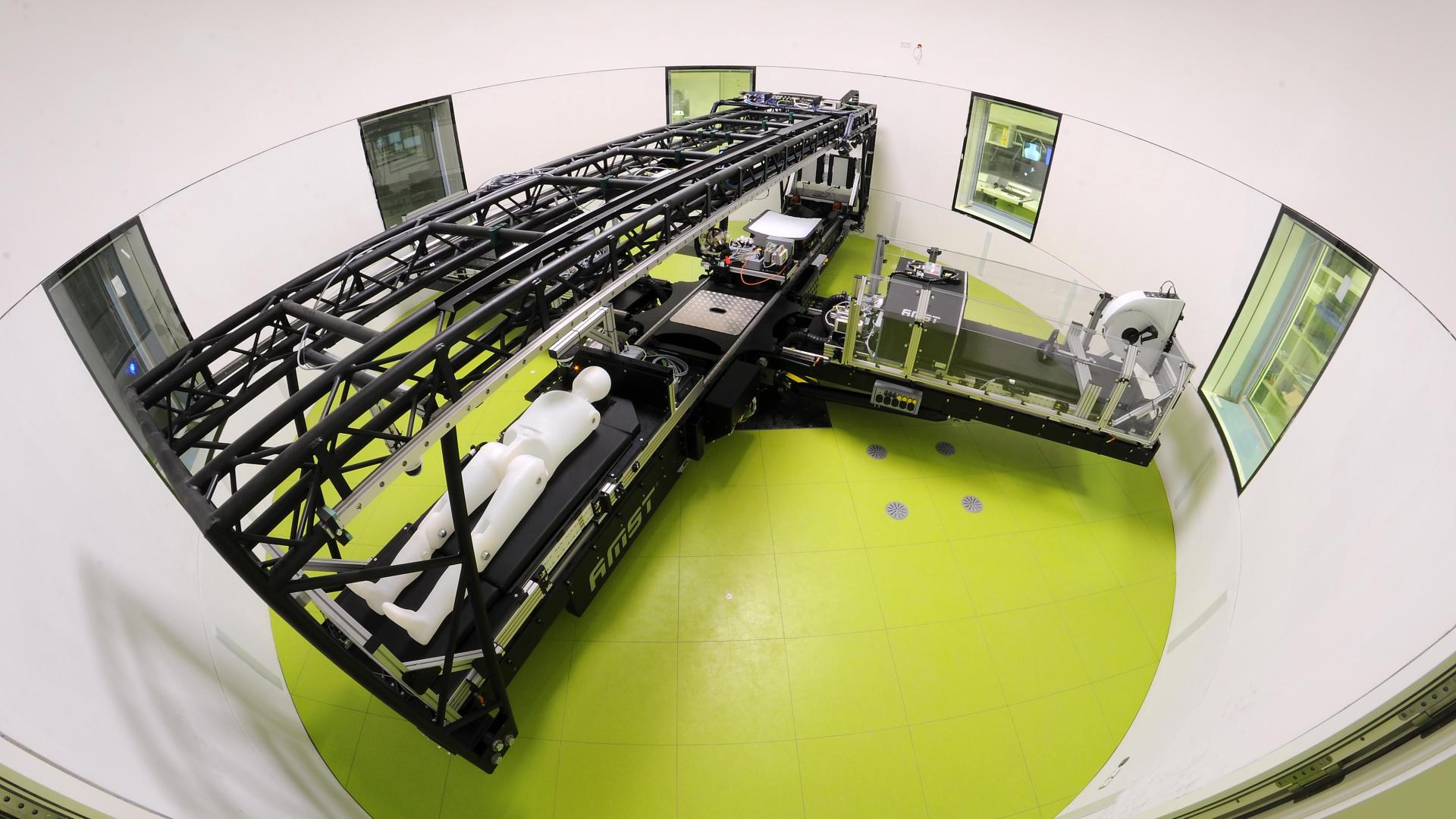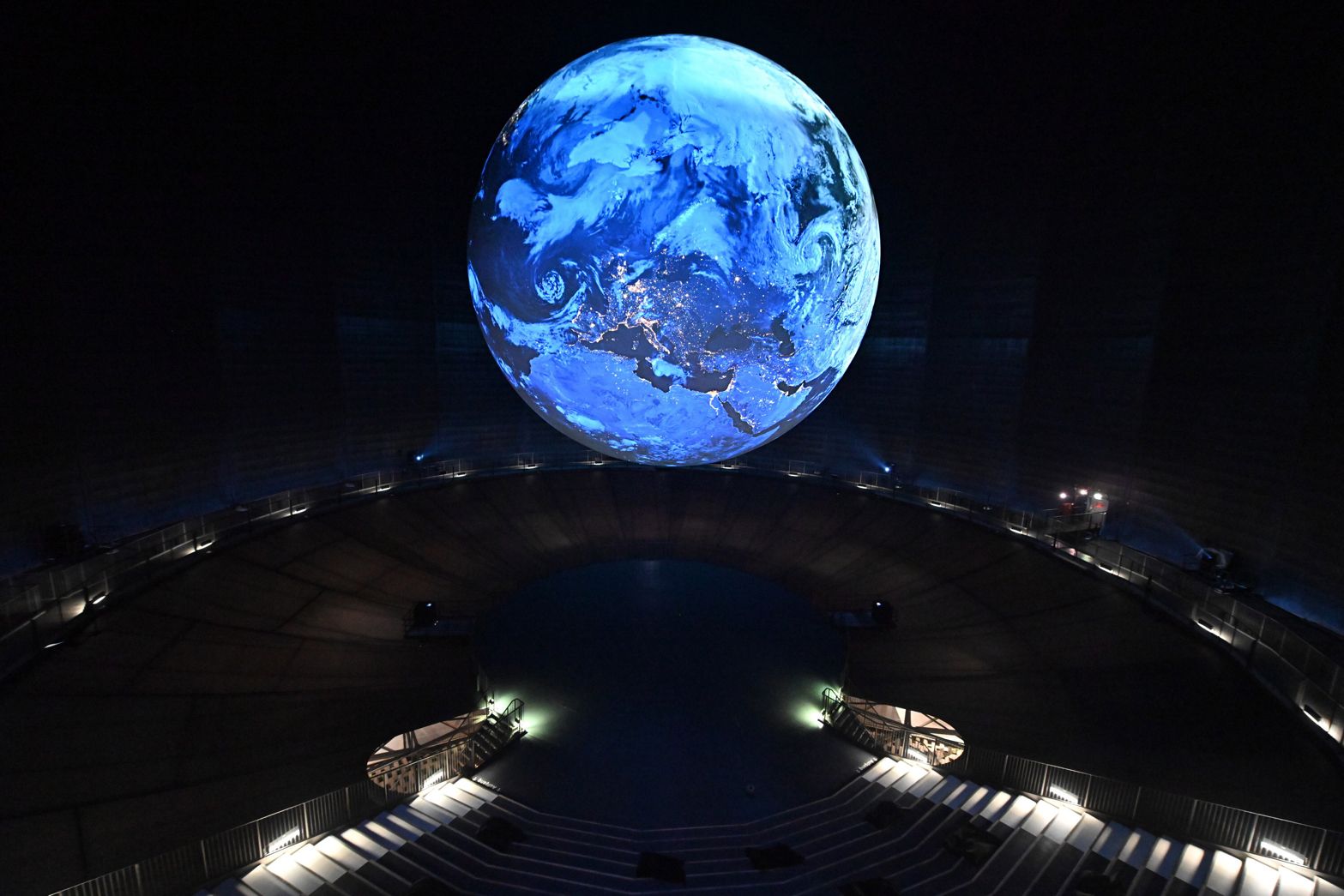
DLR supports exhibition in Oberhausen Gasometer
Published on Thu, 07.10.2021 – 18:06 CEST in Events, covering DLRSince October 1, 2021, the Oberhausen Gasometer has been showing the exhibition "Das zerbrechliche Paradies" (The Fragile Paradise). Visitors thus have the opportunity to take an impressive look at the climate history of the earth. The exhibition is supported by the German Aerospace Center DLR.
Since its formation around 4.54 billion years ago, the Earth has undergone numerous changes. At the beginning, it was an uninhabitable lump of rock in outer space; today, it is the only planet that can be said with certainty to have life on it. But no species has shaped and changed the face of the earth as much as Homo sapiens. At the latest since the 18th century, i.e. with the beginning of industrialization in the global North, the effects of human activity have been clearly visible. Above all, the worldwide hunger for energy and raw materials is leaving its mark on the blue planet. Most people are aware that careless use of the available resources leads to a dead end. Nevertheless, the overall picture of our complex ecosystem is difficult or impossible to grasp in everyday life. However, anyone who has had the privilege of seeing the Earth with their own eyes from space recognizes its fragility. Even the first space traveler in history, Yuri Gagarin, radioed from space the words, "I see the Earth! It is so beautiful!" All astronauts have expressed themselves similarly, most recently William Shatner. At the age of 90, he took off on a suborbital flight with Blue Origin on Oct. 13, 2021, as a member of mission NS-18. Shortly after landing, he was deeply impressed by what he had seen in a conversation with Jeff Bezos.
Wir bringen den Menschen Kunst und Wissenschaft gleichzeitig nah. Das ist das Besondere am Gasometer.
Jeanette Schmitz, Managing Director Gasometer GmbH
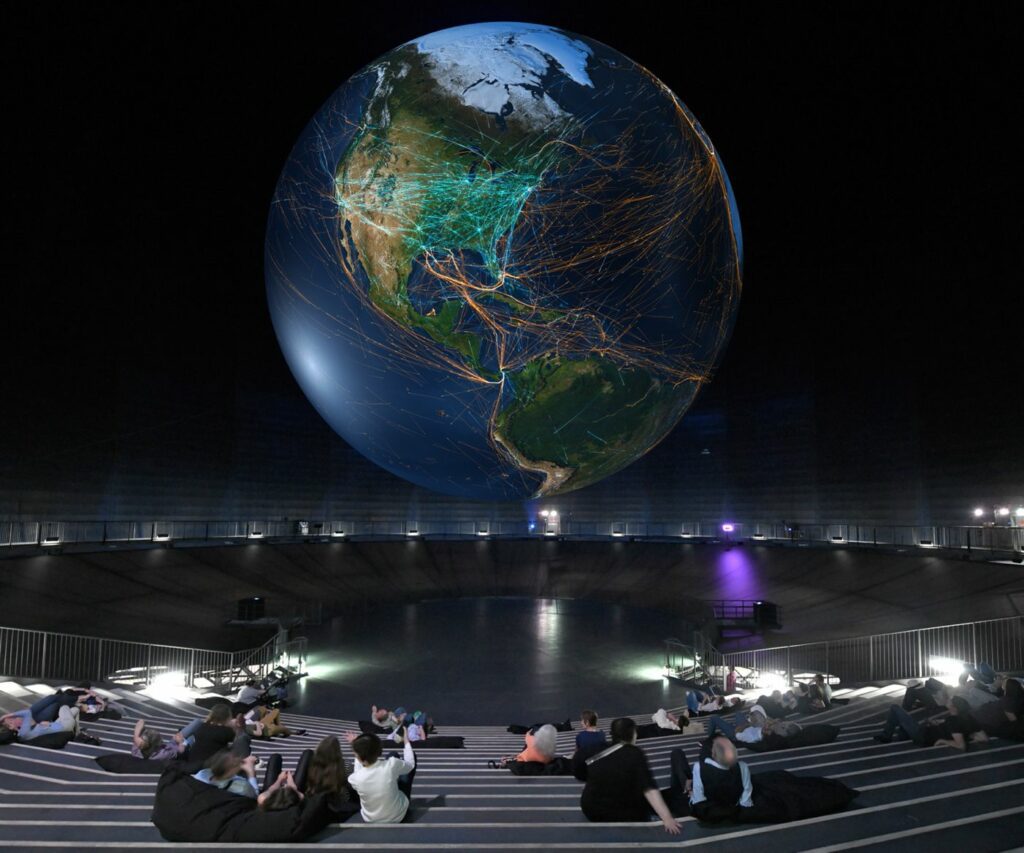
The exhibition "Das zerbrechliche Paradies" (The Fragile Paradise) in the Oberhausen Gasometer is no less impressive. The highlight awaiting visitors in the 100-meter-high airspace is the "Earth Sculpture" with a diameter of 20 meters. Data from the DLR's Earth Observation Center is projected onto it at a resolution of 58 megapixels. According to Jeanette Schmitz, managing director of Gasometer GmbH, the aim is "to show the beauty of our planet that is worth protecting." To this end, attention is also drawn to grievances such as the clearing of rainforests, the littering of the oceans or the consequences of industrial agriculture. On the other hand, projects are also shown that are intended to give courage as a glimmer of hope. For example, The Ocean Cleanup project, the Vertical Forest building in Milan or the renaturation of the Emscher river directly in front of the Gasometer.
"Earth observation allows us to say something about the health of the Earth."
As Nils Sparwasser from DLR points out, the data collected from satellites are not necessarily images at first. Especially when measurements are taken in spectral ranges that are hidden from the human eye - such as infrared. The information collected by satellites is received by stations in the Arctic and Antarctica, but also in Oberpfaffenhofen and Neustrelitz. The raw data is then analyzed and processed by the Earth Observation Center. The measured values can then be used to obtain information about the state of the waters or the atmosphere, for example. And in combination with light, sound and a concept, this becomes an emotional exhibition in the Oberhausen Gasometer. In addition to the large earth sculpture, there are 20 other globes in the exhibition on which various data are displayed.
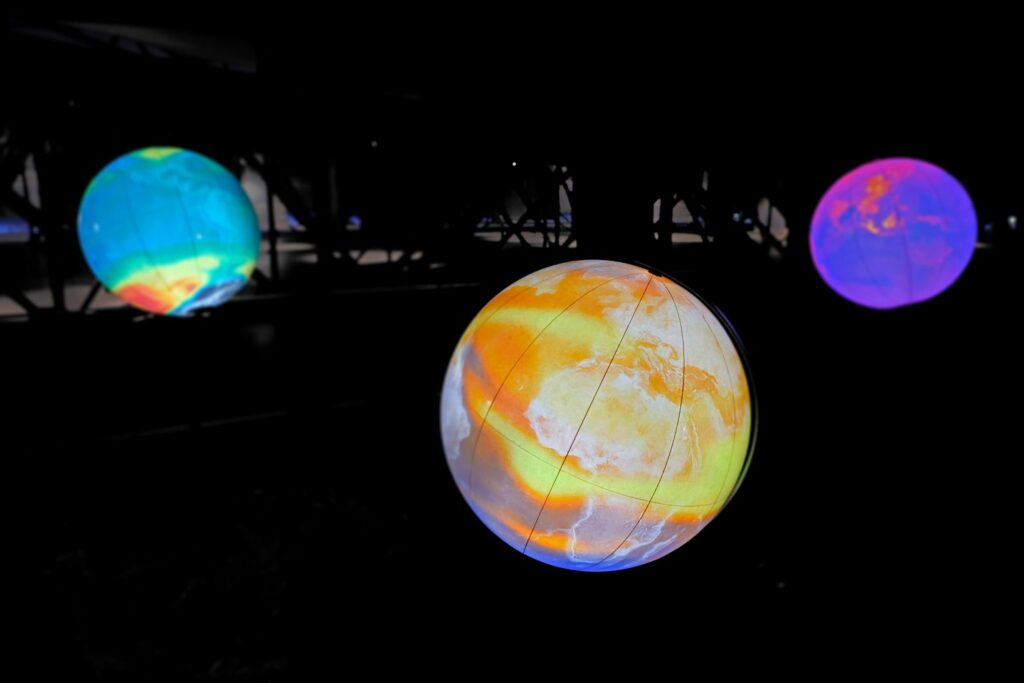
Mein Wunsch ist es, dass Besucher aus dieser Ausstellung nachdenklich heraus gehen und sie nicht nur schön fanden. Denn es kommt beim Klimawandel und beim globalen Wandel, der noch viel mehr umfasst – nämlich den Umgang mit unseren Ressourcen – auf das Verhalten eines jeden Einzelnen an. Denn jeder kann wahnsinnig viel tun, doch dafür braucht es ein Bewusstsein. Und wenn wir zeigen können, wie schön und erhaltenswert die Erde ist, aber auch, wie sehr wir sie beanspruchen, dann ist das ein Riesenerfolg. Wenn wir dann auch noch den Schritt schaffen, dass Menschen das mit nach Hause nehmen und bei der nächsten Kaufentscheidung berücksichtigen, dann bin ich glücklich.
Nils Sparwasser, Head of Department Earth Observation Center, DLR
The exhibition "Das zerbrechliche Paradies" (The Fragile Paradise) in the Gasometer Oberhausen runs until December 30, 2022, an extension is optionally possible. It is open from Tuesday to Sunday from 10 a.m. to 6 p.m., during the vacations (NRW) also on Mondays. Tickets start at 8 euros (reduced), the family ticket costs 27 euros.
via DLR, Gasometer Oberhausen

